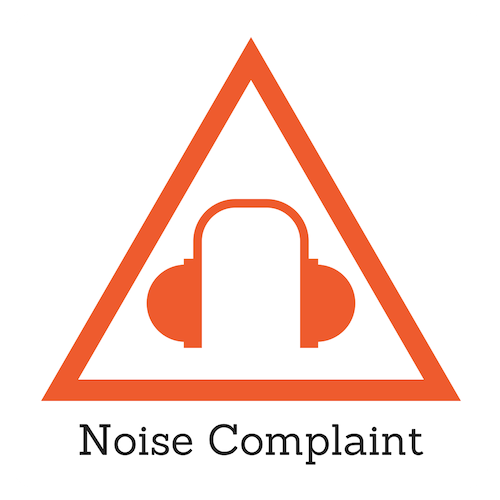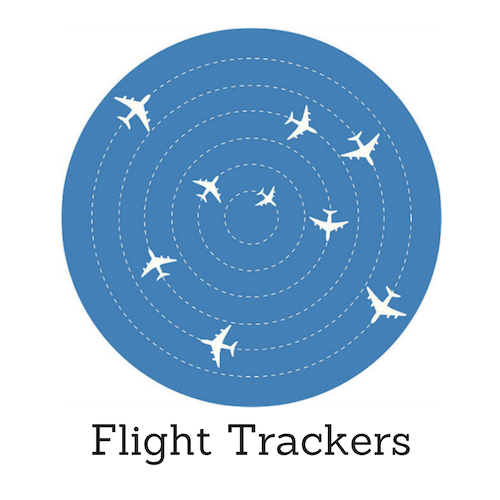Questions and Answers about the flight path, and the conditions applying to its use
Q: Why wasn’t the ILS flight path stopped?
A: The community was unable to change the Government’s approval of the ILS. However its use is restricted by an agreement intended to limit its use. Prior to the AAT legal action we undertook, the ILS approval did not include any restrictions or specific noise abatement controls.
Q: Which aircraft are able to use it and when?
A: To see the detail regarding inclusions and exclusions, please refer to Agreed Flight Path Use and our flow chart which helps in explaining this detail. It’s important to note that the decision criteria referred to in this diagram apply AFTER it has been established that other flight paths are not available. Therefore, a flight that prior to the ILS was using an over-ocean approach should continue to do so - even with the ILS in place - unless that or other suitable flight paths are unavailable.
It is important that you bear these points in mind when you observe the ILS flight path being used. Cloud base of 800ft or less, and/or visibility of not more than 4kms - which is how Airservices has defined “bad weather” for noise abatement - by themselves do not qualify as eligibility criteria for ILS use. All other flight paths need to be unavailable as well, before it can be used in bad weather. If used as per the agreement, the ILS should be used under these infrequent and limited circumstances only, including for emergencies and “operational requirements” (see below point).
All pilots holding an Airline Transport Pilots Licence and under CASA guidelines, should be qualified to fly the RNAV-Z approach (this flight path stays over the ocean longer than the ILS flight path, crossing the coast around Burleigh). Exceptions for these flights that would make access to the ILS permissible are weather related (such that they make other flight paths unavailable); when GPS coverage is inadequate, or there are aircraft equipment issues.
International airline pilots untrained or not accredited to fly non-ILS approaches, can request to use the ILS due to their inability to fly other approaches – and would therefore be allowed to however Airservices Australia has committed to making efforts to discourage this. If an international flight is using the ILS approach YOU need to complain EVERY TIME as you will not know whether they’re using it for this reason or that it’s “operationally required” for another reason. Complain to Airservices Australia online by clicking here plus your federal member - Member for Moncrieff Angie Bell and Member for McPherson Karen Andrews - airlines/pilots currently not accredited for non-ILS approaches need to apply for accreditation on other GCA flight paths just as other international airlines have. It’s the fastest and most straight forward way to get them off the ILS flight path.
Former Member for Moncrieff Steven Ciobo’s office advised that Scoot committed to ensure it only uses RNAV-capable pilots into the Gold Coast, and Hong Kong Airlines said that all its pilots would be RNAV qualified by first quarter 2017.
With the agreement, Gold Coast Airport should not be marketing the ILS flight path to international airlines, and promoting its availability for all/most flights, because it should only be used for bad weather landings, emergencies and operational requirements.
Q: What is the bad weather that will allow ILS usage?
The ILS will be able to be used in circumstances where increased cloud coverage and reduced visibility require the use of the vertical guidance and better landing assurance provided by the ILS, provided that other flight paths are unavailable.
Airservices has developed Noise Abatement Procedures which specify cloud and visibility criteria for ILS eligibility, however as they DO NOT refer specifically to exclusion when other flight paths are available, they are inconsistent with the orders of the AAT.
Q: Will every aircraft fly the ILS flight path on bad weather days?
A: On many bad weather days there will be times when flight paths other than the ILS approach are viable. However, the potential of every plane using the ILS flight path exists in extreme weather, which should only be a handful of days each year when conditions are persistently bad and the incremental benefit the ILS provides over other navigational aids would assist pilots to land safely. (Of note, is the unavailability of a definition by Airservices of “extreme weather” for Gold Coast Airport.) Any other large scale usage is not compliant with the conditions for ILS use and you should complain EVERY TIME to Airservices Australia via here, and your federal members Angie Bell and Karen Andrews.
Q: What are the flight paths that planes are required to use ahead of the ILS flight path?
A: Through the AAT process it was agreed:
All aircraft approved by CASA should use the existing RNAV-RNP, RNAV-X and W-RNP flight path approaches unless another approach is operationally required or required for emergencies
All aircraft not approved by CASA to use the existing RNAV-RNP, RNAV-X and W-RNP flight path approaches must use either the new RNAV-Z flight path approach or visual flight path approach (Surfers to Mermaid Beach) unless another approach is operationally required or required for emergencies.
The ILS can only be used by aircraft approved by CASA to use the ILS when the flight path approaches set out above are not appropriate - in circumstances where the use of the vertical guidance and better landing assurance provided by the ILS is necessary.
Q: What does “operationally required” mean?
A: No standard definition of the term exists. An aviation expert has provided the following explanation: The term "require" has special meaning in aviation. It assigns priority but may need post-justification e.g. priority for landing may be operationally required if the aircraft is running low on fuel.
So you will need to be vigilant to ensure pilots, airlines, and Airservices don’t take advantage of the conditions agreed.
Q: How will I know whether planes using the ILS have a legitimate need or are simply taking advantage of it for convenience or some other excluded reason?
A: Things to look for are the same airlines using it regularly and a high frequency of use on fine weather days. If the restrictions that have been imposed are adhered to then there should be no planes on the ILS flight path on most days.
However, detailed weather conditions including visibility and cloud conditions at the exact time a plane is flying are available, and these will provide a greater degree of certainty. Indicative visibility levels are reported in Airservices’ Webtrak tool.
Q: Will training flights use it?
A: Yes, training flights are able to use the ILS. The conditions will now limit it to small planes under 5,700kg (about the equivalent of a 9-seater).
The good news is pilots are not able to use the Gold Coast ILS flight path to keep up their ILS recency requirements, for traffic sequencing, to practice autolands. Recency applies to pilots who are already trained on the ILS but need to fly an ILS approach in order to maintain their accreditation. Airservices Australia has also undertaken to engage in consultations with stakeholders to reduce the noise impacts arising from the use of the ILS flight path for training.
Member for McPherson Karen Andrews on 29 November 2016 advised she is against all training flights using the ILS, advising constituents that she asked the Minister for Infrastructure to consider no training flights as an ILS condition. With such strong commitment, she’s the perfect person to notify if training flights become an issue.
http://www.karenandrewsmp.com.au/Newsroom/Media/ID/868/ILS-must-come-with-conditions-imposed
Q: If planes are using the ILS outside the conditions, what can I do?
A: We are hopeful the aviation industry does everything possible to reduce its impact on our city’s residents. However, it is up to YOU to do the following when planes fly over and you think it’s outside the conditions of use:
Lodge complaints to Airservices Australia EVERY TIME viahttp://www.airservicesaustralia.com/aircraftnoise/about-making-a-complaint/how-to-make-a-complaint/ . Find the online noise complaint form direct by clicking here.
Call, email or send letters of complaint EVERY TIME to Federal Member for Moncrieff, Angie Bell (covering areas of Southport to North Burleigh)
Call, email or send letters of complaint EVERY TIME to Federal Member for McPherson, Karen Andrews (covering areas of North Burleigh to Coolangatta)
Take greater interest in the Gold Coast Airport’s Community Aviation Consultation Group http://cacg.goldcoastairport.com.au/ Note: The Airport Noise Abatement Consultative Committee (ANACC) was replaced by more meetings of the Community Aviation Consultation Group in 2024.
Have your say at future federal elections. Remember, it was a Liberal National Coalition government that approved the ILS.
Explain these conditions to people you know who will be affected. The more people who are aware and involved in monitoring the situation, and lodging complaints with Airservices Australia and their Federal Member, the better the chances of getting enforcement of compliance with the rules.
Q: Was the ILS required for the Commonwealth Games as claimed by the Airport?
A: The need for the ILS for the 2018 Commonwealth Games was NEVER mentioned in the preliminary draft MDP, draft MDP or final approved MDP, nor then Minister Truss’ letter of approval of the ILS. GCA only linked the ILS and CW Games in the media after the community’s objections to the flight path were raised. Remember, the Airport delayed its major $200m LIFT project (including terminal upgrade and air-bridges) until after the CW Games.
Gold Coast Airport has made numerous contradictory and inconsistent statements about the ILS and why it wants one. What is now key is that there is an agreement in place to prevent this privately owned business from exploiting its use to the detriment of the community. It is incumbent upon the community to ensure that the agreement is adhered to and this is not allowed to happen.
Q: Why did it take so long?
A: That's a question for the AAT. See the AAT process explained here.
Q: Now that the rules are in place can’t we just relax and be confident that those accountable for monitoring use of the flight path and enforcing compliance will act responsibly?
A: Unfortunately, there is no opportunity for the community to relax its focus and attention on this issue. It was the community that got the conditions restricting ILS use and if it had not been for the community’s vigilance and action, use of the ILS would be unrestricted. Gold Coast Airport and Airservices Australia were the proponents of the application for the ILS, both wanting it for commercial reasons. The only way the community can be assured of appropriate ongoing attention to this issue is to remain focussed on it.
Q: If Stop Flight Path Impacts (Gold Coast Lifestyle Association) was confident in their case against Gold Coast Airport and Airservices Australia, why were terms agreed during mediation before the scheduled hearing, rather than having the case heard and the outcome determined by the AAT?
A: Unlike the other parties whose costs were presumably being covered by the tax-payer and shareholders, our costs were being covered by donations from the community. The costs of such cases are considerable and involve fees for solicitors and barristers as well as industry experts. In addition to these there are administrative costs and it is estimated that costs to Gold Coast Lifestyle Association would have been several hundreds of thousands of dollars. As representatives of the community, and having been funded by the community, we had a responsibility to ensure that we were using limited donated funds responsibly and the decision to settle upon negotiated terms prior to a hearing was considered to the optimal outcome.
The conditions that have been agreed by the Airport and Airservices Australia are a significant achievement for us and any potential improvement on these, as a result of proceeding to a hearing, were considered to be unjustifiable when cost was considered.
The other component of our complaint, which was brought by the Tugun Cobaki Alliance, proceeded to hearing as it was considered that no acceptable outcome could be achieved through mediation.






